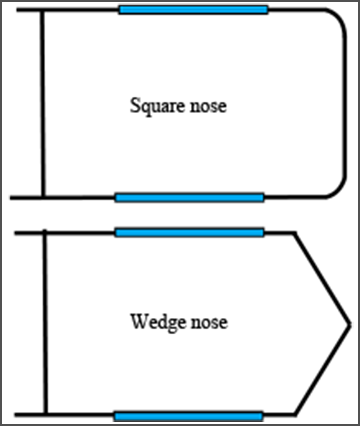Trailer Talk: Gooseneck Do’s and Dont’s
This Month’s Trailer Talk is About Gooseneck “Do’s and Don’ts”
Hooking up a gooseneck trailer incorrectly can put you and your horse’s life in danger. Here’s what you need to know:
QUICK TIPS
A gooseneck trailer should sit level to prevent blowouts and broken axles. A level trailer distributes the weight evenly to both axles and all four tires. Axles and tires have weight ratings that should not be exceeded. An un-level trailer places more weight on one or the other axle/tires.
Not all gooseneck trailers will fit on today’s trucks. A gooseneck trailer must have 6′ or more from the top of the tailgate (top of the truck bed sides) to the bottom of the gooseneck when sitting level. Taller trucks may be too high to fit properly under a gooseneck trailer, especially goosenecks built before 2000. Most trailers built after 2000 will sit level on trucks that measure up to 59″ from the ground to the top of the tailgate (sides of the bed). Goosenecks built prior to that may not have enough clearance while sitting level. Check this before you buy.
An adjustable coupler will not raise and lower a trailer to gain more clearance from the top of the tailgate/bed sides to the bottom of the gooseneck. An adjustable coupler only raises and lowers the nose portion of the trailer to keep it level on different height truck beds. EquiSpirit trailers are “built to order,” so we can block the axles on the trailer higher if necessary to support taller trucks with beds that are higher.
If the length of the truck bed is too short, the nose of a gooseneck can hit the cab of the truck when turning. In general’ a 6′ length truck bed will work with most goosenecks that have a wedge (aerodynamic) nose. Trailers with a flat or square nose will still risk hitting the cab of the truck when turning. Additionally, many trucks that are defined as Crew Cabs with 4 doors, will have 5’6″ length beds, further increasing the risk of hitting the cab on turns. Most trucks with 8′ long beds will allow turning without the risk of hitting the cab provided the hitch is properly positioned/mounted in the truck bed. For trucks with the shorter beds, an offset or ball/hitch extension can help move the front of the trailer back to prevent this issue.
 Always attach the safety chains. Gooseneck ball hitches have attachments on both sides of the coupler plate. If the trailer disconnects from the ball, the safety chains keep the trailer from moving back off the truck bed. They also keep the trailer from thrusting forward into the cab if hit hard in the rear.
Always attach the safety chains. Gooseneck ball hitches have attachments on both sides of the coupler plate. If the trailer disconnects from the ball, the safety chains keep the trailer from moving back off the truck bed. They also keep the trailer from thrusting forward into the cab if hit hard in the rear.
To avoid the aggravating work of locking your coupler into place, all EquiSpirit trailers have a self-latching coupler that latch automatically when you lower the trailer onto the ball.
Hauling three or more horses is a lot of weight so EquiSpirit will always recommend using a Gooseneck style trailer. When hauling 2 or fewer horses, a tag-long (bumper pull) trailer will work fine. There are advantages and disadvantages to both goosenecks and tag-alongs. If you want to know what they are, check out our article on gooseneck vs tag-alongs.











